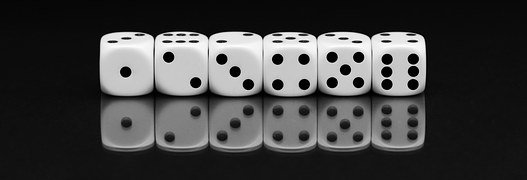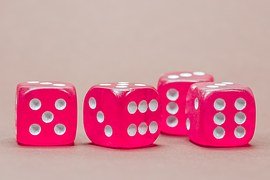

At talkSTEM, we think games are a great way to engage your children in family with math – sometimes without them even realizing it! Ever play Yahtzee? What about Bingo? Monopoly? CLUE? All these games and more have math elements and require us to use math very quickly to solve problems, make estimations, make decisions and measure progress.
On Pi Day, March 14th, we learned to play a new math game that is so simple and fun, any family can try it. The game is Rolling Pi and the objective is to roll a die as fast as you can to get the first 5 digits of pi before your opponents do. Similar to the dice game tenzi, you can roll as fast or slow as you like.
We played for the first time with Girls Do STEAM, an initiative started by 3 Greenhill high school girls hoping to inspire ALL girls to grow their Science, Technology, Engineering, Art, and Math (STEAM) mindsets and to view their everyday surroundings and activities as an arsenal of fascinating STEAM connections. You can learn more about what they do here: girlsdosteam.com.
Watch in this video as Girls Do STEAM’s Anagha and Sarah compete to roll the first 5 digits of pi.
In this Rolling Pi dice game, there is no limit for how many players can play.
Want to expand this math game? To add more players, simply add more dice. If you want to make the game more difficult and intense, simply increase the digits of pi to roll, and be sure to give everyone a second die. How long does it take you to roll 3.1415 versus 3.141592653, or 3.14159265358979?
You can also make it a friendly competition and use a stop watch or smart phone to record your highest scores for fastest pi rolled. Share your speediest high scores with us on social media and tag @talkstem @talkingstem.


You can open discussion with your young players about probability and the strategies involved in this game. Why could it help you to roll faster than your opponent? Could a player who rolls slower still roll the digits of pi before you? What are the chances of that? Well- you can find out exactly that using probabilities. Dice games are another fantastic method for introducing and practicing probability math problem
For example:
For each dice roll, we can assume that a typical roll gives equal chances to land on any of the 6 numbers.
So your probability of rolling a ‘1’ on your first try would be 1/6 since ‘1’ is one out of 6 possible numbers to land on.
What about the probability of you rolling a ‘1’ OR a ‘2’ ? We can add the two probabilities, 1/6 +1/6 =2/6 or 1/3.
Here’s where the fun starts – what about the probability of you rolling a ‘1’ THEN a ‘2’ on your first try? We can multiply the first probability of rolling a ‘1’ (1/6) by the probability that you will roll a ‘2’ (1/6). This would be 1/6 x1/6 = 1/36.
You can imagine as you add more rolls, and certainties to your question – the probability can get pretty small! There are endless options for probability dice games, including this free downloadable one found on Education.com.
We hope you enjoy playing this math game with your family and friends. What are your family’s favorite games? Can you identify the math elements of each one? How would the game work with out the math? You’ll find that without the math – most games cannot function and are no fun at all!
Share your math game or games with us and your high scores for this free, fun STEM game!








1 comment